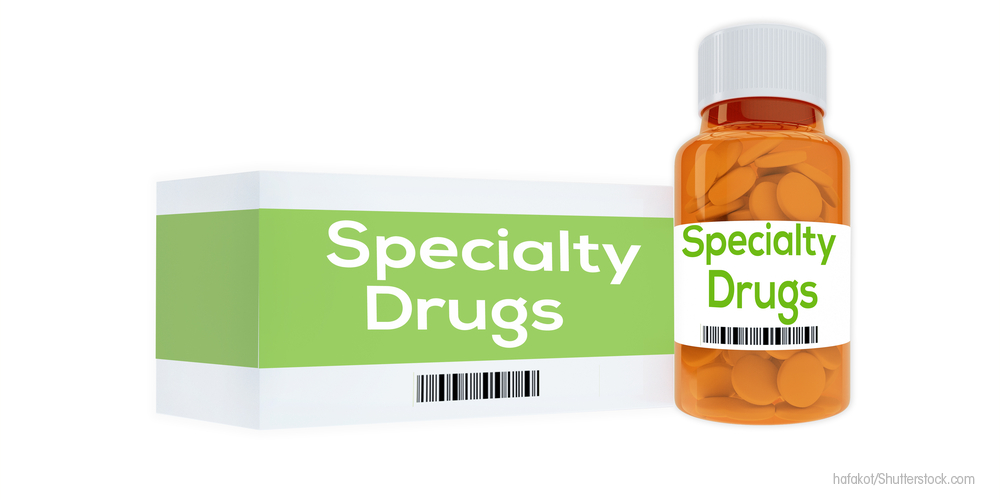How the Specialty Pharmaceutical Market is Changing
How would you define a specialty pharmaceutical? Chances are, it’s different from the way another healthcare executive would define them.


How would you define a specialty pharmaceutical? Chances are, it’s different from the way another healthcare executive would define them.
In fact, as Sheila M. Arquette, executive director of the National Association of Specialty Pharmacy (NASP), says, a standard definition of specialty drug has yet to be adopted. “The FDA, employer groups, health plans, and pharmacy benefit managers (PBMs) all have their own ways of defining this drug category,” she says.
NASP views specialty drugs as more complex than most prescription medications and used to treat patients with serious and often life-threatening conditions. Those include:
- Cancer,
- Hepatitis C virus,
- Rheumatoid arthritis,
- HIV/AIDS,
- Multiple sclerosis,
- Cystic fibrosis,
- Organ transplantation,
- Human growth hormone deficiencies,
- Hemophilia, and
- Other bleeding disorders.
These medicines, in some cases can be taken orally, but often must be injected or infused and may have special administration, storage, and delivery requirements. Many of the injectable medications are self-administered in the patient’s home. Infused specialty drugs are administered in various treatment settings, such as a patient’s home with the support of a home healthcare professional, a doctor’s office, or hospital, says Arquette.
At Cardinal Health, a distributor of specialty pharmaceuticals, it classifies this type of therapy in four ways. “Specialty products typically have one or more of the following characteristics: They are prescribed to small patient populations with rare, complex, or chronic conditions; they may be part of a complex treatment regimen or require ongoing patient monitoring; they may have special shipping and handling requirements, such as temperature controls; and they are usually more expensive than traditional pharmaceuticals,” says Joe DePinto, president, Cardinal Health Specialty Solutions.
Market Drivers
What factors are behind the surge in this market? Quite simply, it’s innovation and money, experts point out. “This has primarily been driven by advancement of the science as well as a shift of capital investment to address patient and market needs,” says David Rosner, principal and digital life sciences leader, Deloitte Consulting. “In addition to the increase in the number of specialty-focused pharmaceutical firms, nearly all of the major big pharma manufacturers have added specialty products to their portfolios and consider them key to their growth.”
Randy Maloziec, vice president, biopharma relations, at US Bioservices, a part of AmerisourceBergen, echoed those observations.
“Nearly every pharmaceutical manufacturer has specialty therapies in their pipeline and it is universally accepted that the specialty marketplace will continue to see significant growth in revenue and overall pharmaceutical utilization,” he says. “This growth-real and anticipated-is driving nearly every stakeholder in the market to develop solutions or capabilities to support these therapies. This could be everything from an integrated delivery network (IDN) opening its own specialty pharmacy to a payer seeking new ways to manage overall spend.”
With so many companies entering the specialty pharma space, it begs the question, is what was highly specialized and rare now just becoming the norm?
Market Challenges
Growth is almost always followed by challenges. “One of the biggest changes is that specialty products continue to become more targeted and patient populations smaller, particularly as more gene-based and cellular therapies come to market,” says DePinto. “These products face unique challenges in everything from recruiting patients into clinical trials, to determining how to efficiently distribute the product, to managing payer and reimbursement issues. Not only have the products themselves become more specialized, so has the approach to distributing and commercializing them.”
Another key change, according to DePinto, is the increased focus on security and traceability of products. Through advanced technology such as radio-frequency identification (RFID), he says it’s now possible to ensure supply chain integrity and to track products at every point from the manufacturing plant to the site of care.
That logistical part of the discussion is critical, especially when it comes to advanced therapies such as gene and cellular therapy.
“Managing the logistics of CAR-T therapies, [for example], is highly complex because of their high value, temperature sensitivity, and the precise timing in which they must be administered to the patient,” says DePinto. “It’s important to have a scalable distribution network that can compliantly and efficiently transport these products to sites of care nationwide, as well as technology systems to monitor the exact temperature of each dose of medicine the entire time it is in transit. The network also needs clear, standard operating procedures (SOPs) to detail how it would handle any potential logistics risk to the therapy.
“Because of the precise timing requirements, it is critical for the logistics provider to communicate with the pharmaceutical manufacturer, the site of care, and other stakeholders, such as the patient hub, to ensure that all parties are aligned in their efforts to get the therapy to the patient at the right time. Even a minor delay could impact the efficacy of the product and reduce the patient’s chance of experiencing the best outcome.”
Another major challenge facing specialty pharma is the shift from fee-for-service reimbursement to a value-based care model where physicians are reimbursed based on the quality of care and overall patient satisfaction.
“Under these new payment models, physicians are rewarded for reducing the costs of care and demonstrating improved patient outcomes,” says DePinto. “For specialty diseases, the approach of managing a patient across an ‘episode of care’ can be very complex because specialty patients are often treated with multiple medications and receive different interventions at multiple sites of care, making it challenging to track results. For manufacturers of specialty medications, it is not enough for therapies to be safe and efficacious, they must also show they can deliver improved outcomes at a better value.”
David Calabrese of OptumRx Talks New Role, Market Insulin Prices and Other Topics 'On His Mind'
April 13th 2023In this month’s episode of the "What's On Your Mind podcast," Peter Wehrwein, managing editor of MHE connects with the now Chief Clinical Officer of OptumRx Integrated Pharmacies, David Calabrese. In this conversation, David touches on his transition in January as OptumRx’s former chief pharmacy officer and market president of health plans and PBMs to his new role as Chief Clinical Officer where he now focuses more on things such as specialty pharmacy to home delivery — with an overall goal of creating whole-patient care. Throughout the conversation, Calabrese also touched on the market’s hot topic of insulin prices and behavioral health services within the OptumRx community, among other topics.
Listen
Upended: Can PBM Transparency Succeed?
March 6th 2024Simmering tensions in the pharmacy benefit management (PBM) industry have turned into fault lines. The PBMs challenging the "big three" have formed a trade association. Purchaser coalitions want change. The head of the industry's trade group says inherent marketplace friction has spilled over into political friction.
Read More
Briana Contreras, editor of Managed Healthcare Executive, spoke with Nancy Lurker, CEO and president of EyePoint Pharmaceuticals. Nancy shared a bit about EyePoint and how the organization’s innovative therapies are addressing patient needs through eye care, and most importantly, she addressed C-Suite positions like the CEO role. Nancy shared advice for those seeking to reach the CEO level, especially toward women in healthcare and other roles, and what it takes to run a biopharma company.
Listen
The deliberate disconnection of Change Healthcare to ring fence a cyberattack entered its seventh day today. Prescribers are finding ways to get pharmacy claims processed, and UnitedHealth Group says disruption to the dispensing of prescriptions has been minimal. But independent pharmacies want more information and protection from financial consequences from pharmacy benefit managers.
Read More